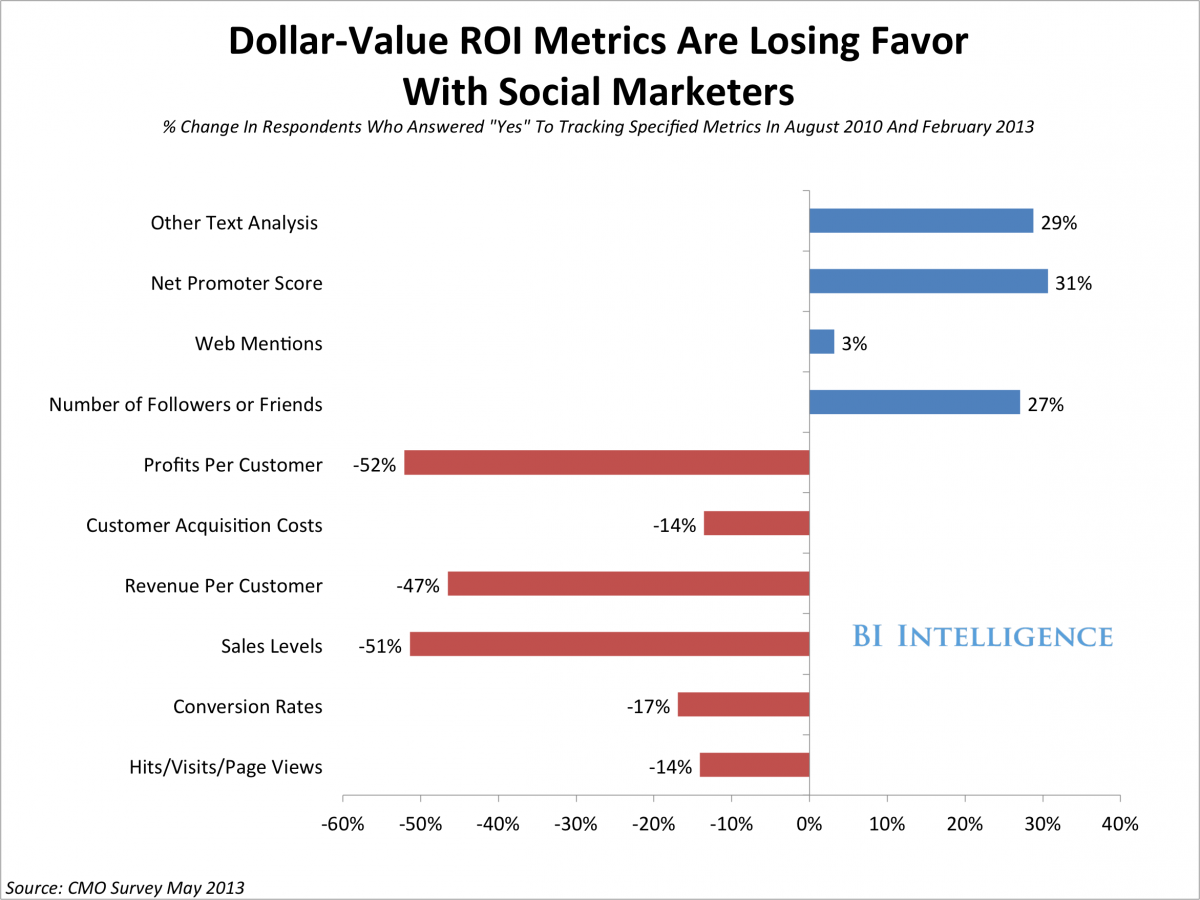Many brands are moving away from metrics that purport to measure ROI on social media.
They’ve realized that social media isn’t a transactional engine or sales machine, so they’re dropping half-baked indicators that gauge secondary effects, such as financial return.
Instead, the new metrics evaluate social media strategies in terms of audience-building, brand awareness, and customer relations.
In a new report from BI Intelligence, we look at the no-frills but powerful metrics that social media managers and analytics companies are focusing on, we explain how the end of the vogue for ROI has not meant a pullback on social media budgets (in fact, social media budgets are ballooning). And we dig into some of the misconceptions and misuses surrounding the more common reach and engagement metrics popularized by Facebook Insights, the built-in analytics dashboard for Facebook pages.
Access The Full Report, Charts, And Data By Signing Up For A Free Trial Today >>
Here’s how social media strategies are evolving:
- The decline of ROI metrics: Between 2010 and 2013, the percentage of marketers using a revenue-per-customer metric on social media went from 17% to 9%, according to the February 2013 CMO survey. The percentage tracking conversion rates also dropped, from 25% to 21%.
- Even as the vogue for ROI indicators fades, social media budgets are ballooning. On average, top marketers expect to devote 9% of their budgets to social media spend in 2014, and 16% by 2018, according to the same survey.
- Exceptions: Of course there are exceptions to the move away from ROI. Some social commerce applications and direct response campaigns will achieve measurable results on Facebook, or other social networks. And the end of the ROI-fever definitely doesn’t mean that all metrics can be thrown out the window.
- The metrics to watch are audience reach, engagement, and sentiment. On Facebook, it’s always important to remember that due to algorithmic filtering, brand or business posts will only be seen by an average 16% of their fans.
- Facebook shares are particularly valuable, because normal users’ posts are seen in a relatively high percentage of friends’ news feeds (compared to posts by brand pages); between 29 and 35% according to one study.
- Improving the most common metrics: Insights, Facebook’s built-in analytics tool, offers great basic data for measuring reach and engagement. We show you how to transform those numbers into richer and more valuable metrics.
- Post reach is the most fundamental indicator of reach on Facebook, but it’s important to track it relative to number of page fans and enrich it with complementary indicators. We show you how, and include screenshots.













Leave A Comment